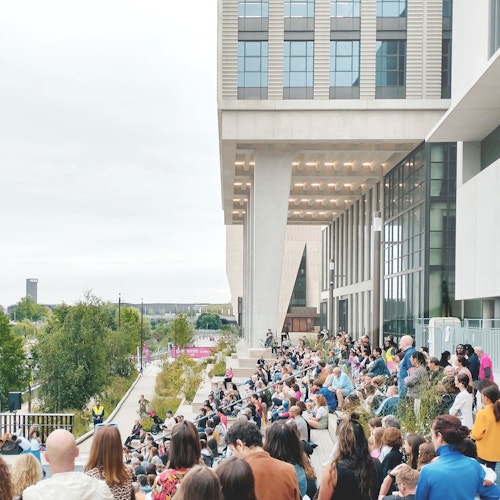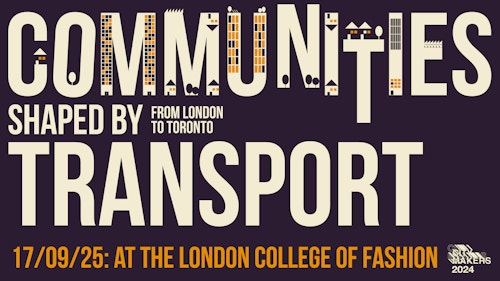/ Citymakers - Communities shaped by Transport: London
With an integrated transport network rivaled by few global cities, how can London channel the power of its infrastructure into placemaking?
For its sixth year, Citymakers returned with a pair of events; one in London, one in Toronto, to explore the role of transport in catalysing sustainable development in creating meaningful communities.
Beginning at the London College of Fashion, Paul Eaton as Chair opened the evening’s presentations with a reflection on how transport has been the single biggest enabler of London’s growth through the city’s recent history, from the opening of the London to Greenwich Railway in 1838 to the launch of the Elizabeth line, 184 years later, not to mention the role of the car and its undeniable link to urban sprawl. He was quick to point out however that what our speakers would be exploring today was not the transport itself but its impact on citymaking, now that bus, tram and train networks, along with walkable streets, and safe places to cycle or ride scooters, are being employed to shape communities, both in London and Toronto.
Architect and Urban Planner Naama Blonder gave us a view from Toronto, straight away setting out some of the urban pros and cons of current transit policy in Ontario. While she applauds the general trend for Transit Oriented Communities she was quick to point out how urban design and specifically the scale on which urban development is configured are out of kilter.
LSE Cities’ Executive Director Philipp Rode reminded us that this subject can be highly politicised and contentious, and cautioned of the dangers of thinking that transport was just about getting from A to B. He threw the conversation open by pointing out the role accessibility, technology, politics, equity, behaviours and community have to play in transport, citing examples from Berlin to Paris to the Netherlands.
Emma Cariaga, COO at British Land brought us back to London with a look at Canada Water, a place where the evident potential of location, transport and the shift away from the car is now being realised in the mixed-use redevelopment of areas of former car park. Originally built with the expectation that shoppers would arrive by car, the future Canada Water is instead intended to make full use of a resident community and its two tube stations. With the first phase nearing completion which includes a new footbridge across the dock, Canada Water is also investing in pedestrian and cycle connections.
Head of Design at Old Oak and Park Royal Development Corporation Eleanor Fawcett considered the recurring themes around two of London’s largest regeneration projects, both of which she has been involved with, both of which have been shaped by transport across modes and scales, from the establishment of pedestrian routes to multi-billion pound railway infrastructure.
Paul introduced London’s Deputy Mayor Jules Pipe into the discussion whose roles at Hackney and now at City Hall give him an interesting perspective on where policy meets implementation. He observed that the reclaiming of public space during the Covid lockdown and the waves of increasingly progressive public policy have driven a shift in attitude towards street usage.
Paul invited Robert Evans to comment on the relative roles of the private and public sector in urban regeneration. Robert’s 23 years experience at Argent working with transport infrastructure at King’s Cross and Brent Cross amongst other projects, led him to conclude that a collaborative approach was inevitable for any large scale masterplan and although transport can be allowed to inspire development, ultimately it needs to tamed.

